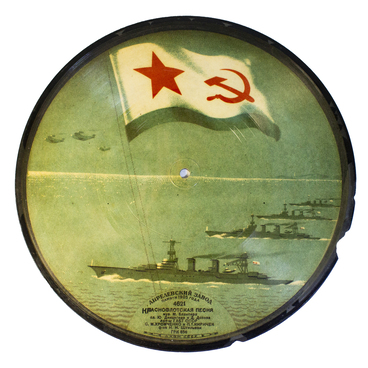The golden days of clock making in France was in the 18th–19th century. Mantel clocks made during this period are now in many European museum collections.
In 2015, the mantel clock “Lyre” was housed in the Oryol Museum of Local History for the first time after the restoration. The clock in the Louis XVI style is mounted on the lyre-shaped porcelain base, which is covered with a cobalt color glaze. This color is also known as bleu nouveau, which means “new blew” in French.
Bronze clocks of early classicism were often made in form of a lyre — an ancient string instrument. Another typical detail of a French mantel clock was a disc-shaped top with rays.
Experts date the displayed clock to the second half of the 18th century. The watchmaker L. Leroy & Cie is indicated on the clock face.
As a rule, only the name of the clockmaker or the clock company was put on the mantel clock face, while the foundry stamp was on the back of the case.
The famous Parisian clock company that made this clock was founded in 1747, but Louis Leroy became its head only in 1889. Since that moment, all the products of the company were signed as “L.Leroy & Cie.” The same inscription can be found on the clockwork itself. Researchers suppose that the clock was made at the end of the 18th century, but the original clockwork was lost or broken, and replaced by the new one at the end of the 19th century.
The clock was restored at the Metal Restoration Workshop of the Center named after Academician Igor Grabar in Moscow. Experts found and studied analogs of this clock. It turned out that such models are housed in the collections of the Victoria and Albert Museum, Walters Art Museum in Baltimore, and the Musée national de céramique in Sèvres. A similar lyre-shaped clock in a typical blue color was first produced at the Sèvres Porcelain Manufacture in France, in 1785, and then their production began in other European factories.
In 2015, the mantel clock “Lyre” was housed in the Oryol Museum of Local History for the first time after the restoration. The clock in the Louis XVI style is mounted on the lyre-shaped porcelain base, which is covered with a cobalt color glaze. This color is also known as bleu nouveau, which means “new blew” in French.
Bronze clocks of early classicism were often made in form of a lyre — an ancient string instrument. Another typical detail of a French mantel clock was a disc-shaped top with rays.
Experts date the displayed clock to the second half of the 18th century. The watchmaker L. Leroy & Cie is indicated on the clock face.
As a rule, only the name of the clockmaker or the clock company was put on the mantel clock face, while the foundry stamp was on the back of the case.
The famous Parisian clock company that made this clock was founded in 1747, but Louis Leroy became its head only in 1889. Since that moment, all the products of the company were signed as “L.Leroy & Cie.” The same inscription can be found on the clockwork itself. Researchers suppose that the clock was made at the end of the 18th century, but the original clockwork was lost or broken, and replaced by the new one at the end of the 19th century.
The clock was restored at the Metal Restoration Workshop of the Center named after Academician Igor Grabar in Moscow. Experts found and studied analogs of this clock. It turned out that such models are housed in the collections of the Victoria and Albert Museum, Walters Art Museum in Baltimore, and the Musée national de céramique in Sèvres. A similar lyre-shaped clock in a typical blue color was first produced at the Sèvres Porcelain Manufacture in France, in 1785, and then their production began in other European factories.



